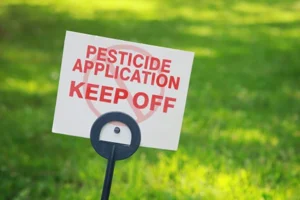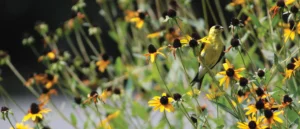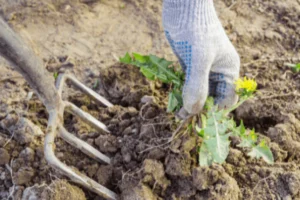How Do Pesticides Affect Birds?
For starters, let’s talk about what a pesticide is. Pesticides includes insecticides, herbicides, fungicides, rodenticides, acaricides, and any other “-cide” you can think of. If the intent of a product is to eliminate a pest or plant disease, it’s a pesticide. This includes a wide range of products, ranging from the more bird-friendly organics to the most broad and ruthless synthetics.

Pesticide chemicals may impact birds by:
- poisoning birds when granules or coated berries and seeds are ingested;
- killing insects and other invertebrates crucial to birds and their young;
- eliminating plants necessary to bird survival;
- bioaccumulating in fish, mammals, and other prey, which may then pass into raptors;
- thinning eggshells and reducing chick weight;
- and suppressing immune systems and inhibiting movement.
That’s not all. Pesticides have long-term impacts that can affect birds and other wildlife well into the future. If such effects kill birds in a place over a sustained time period, these deaths could suppress localized populations for years to come.
Bird aren’t the only victims of dangerous pesticides. People who work closely with these chemicals, such as farmworkers and applicators, are subject to a number of health-adverse effects, ranging from rashes to neurological damage.





